‘Blue Beetle’ Director Says DC Villain Bane Represents The “Unknown Or Forgotten Or Brushed Under The Rug History Of Interventionism In Latin America And The Caribbean”

Blue Beetle director Angel Manuel Soto recently shared that he believes DC Comics villain Bane represents the “history of interventionism in Latin America and the Caribbean” and that he took this view and applied it to Blue Beetle villain Carapax.
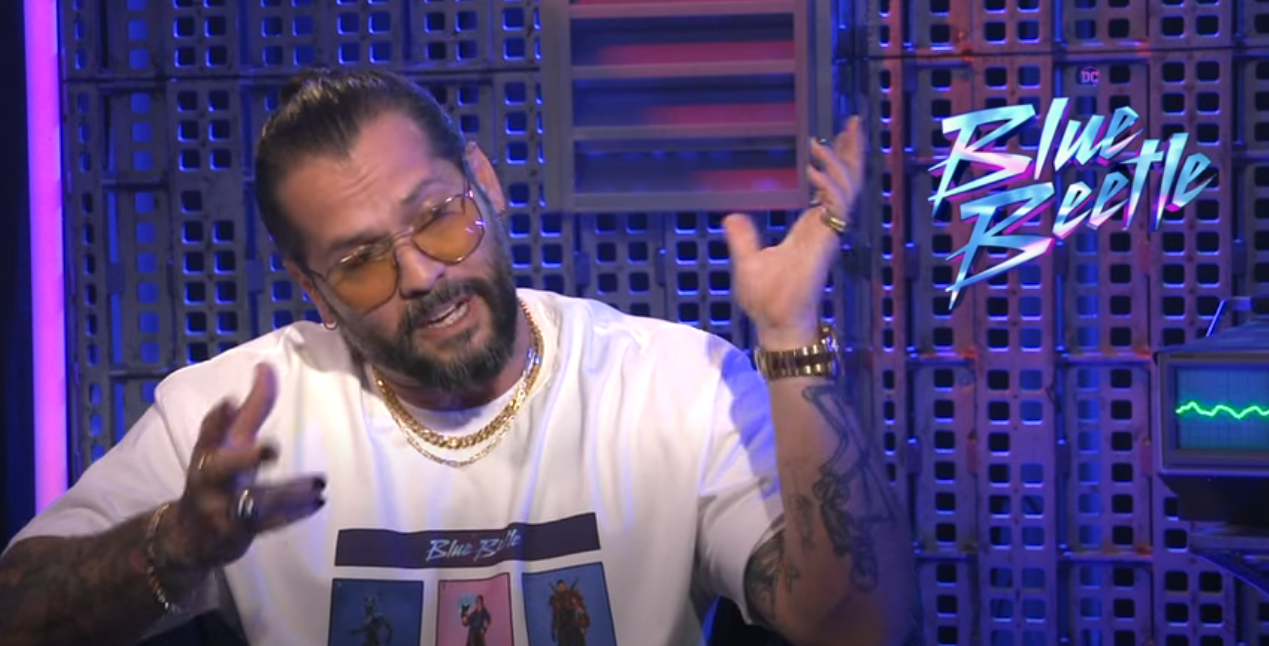
Angel Manuel Soto via The Playlist YouTube
Soto shared his thoughts during an interview with The Playlist where he was asked, “What was it about like the origin of Bane, the story of Bane that really like drew you to him and were like, ‘I really want to tell this story?'”
RELATED: James Tynion IV Retcons Bane With Vengeance Origin Reveal
He responded, “As far as Bane goes, the comics that are about Bane’s story, it felt like he’s very misunderstood much like Carapax in the movie. He is a product of his environment and that history has been buried. The history of the Caribbean, the Antilles. It’s a history that’s brushed off in history books.”
“So for me, it was very important to be seen,” he continued. “And with the character of Bane, the formation of this villain, I think in his own right, he’s also a hero in his story. So whether whatever happens at the end that might have gotten distorted because of what was done to him, I think that what he represents is a lot of the unknown, or forgotten, or brushed under the rug history of interventionism in Latin America and the Caribbean.”
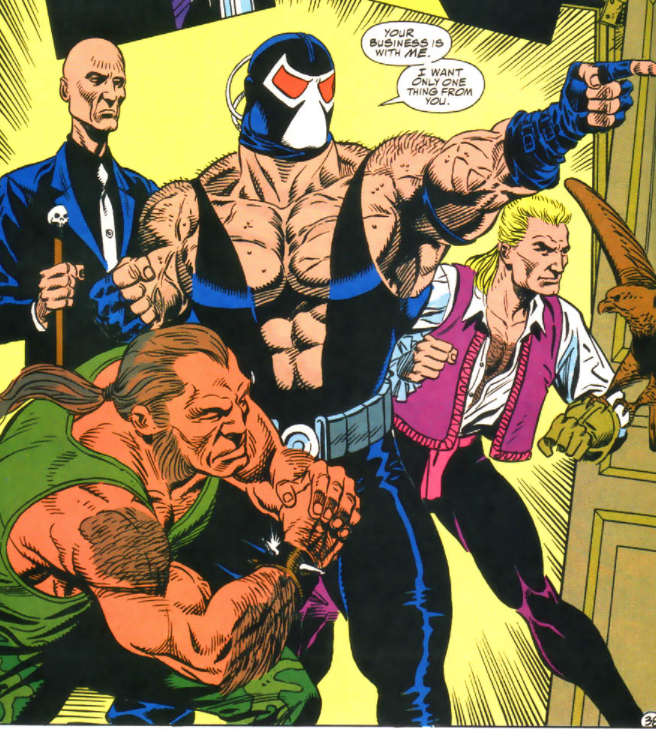
Vengeance of Bane #1 (1993), DC Comics
Soto then shared, “And that’s why, you know, I went in, I pitched Bane, they told me, ‘That’s sweet, but we got this…’ They appreciated it, but the call was because they wanted to show me this movie, and I fell in love with the script that Gareth [Dunnet-Alocer] wrote. I felt that the script not only captured the essence of what it’s like to have a Latino family, what it’s like to be lost in this world, but be able to find yourself by not being ashamed of who you are, by embracing who you are with the power of family and community.
He then revealed he took what he viewed as Bane’s backstory and grafted it on to Carapax in the Blue Beetle film, “But while working on the character of Carapax, I was like, ‘Well, I don’t know if I’ll ever make a Bane movie. Let me take what I loved about Bane, about the backstory that I wanted to explore and let’s give it to Carapax.’ Because part of the idea was that maybe Carapax and Bane came from the same place. Maybe!? I mean Pago Island, right?”
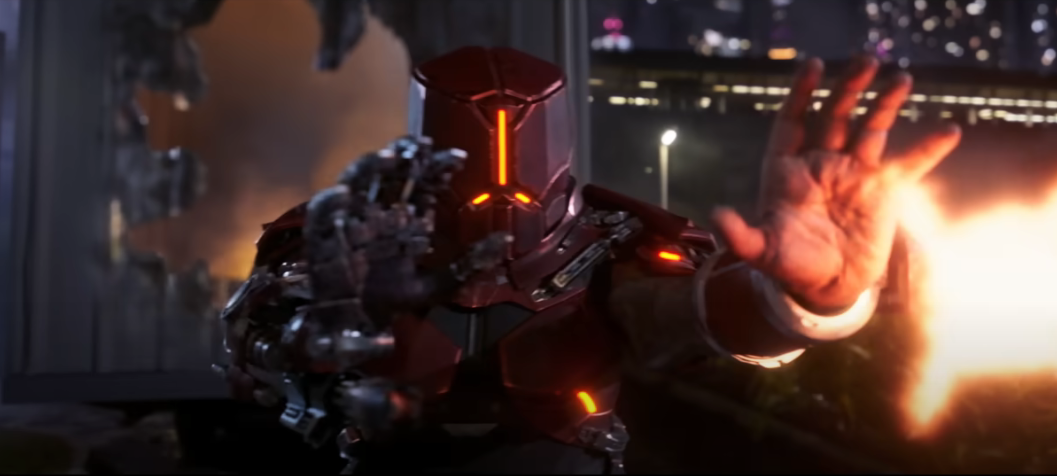
Raoul Max Trujillo as Conrad Carapax in Blue Beetle (2023), DC Studios
RELATED: Chuck Dixon Explains Why Bane Disappeared Briefly Following Knightfall
Soto then explained the importance of taking his perceived version of Bane’s backstory and applying it to Carapax, “Because we need it. When we’re introduced to the world in movies, right, where we are seen as villains, it’s just given that we are born that way.”
“And when we talk about the history of Latin America, nobody dares to question, well, what happened before. Okay, well what happened before? More times than none when you go back even before 1954, but if we want to go to 1954 in Guatemala it was U.S. interventionism that drove these places to the miseries that they’re in.”
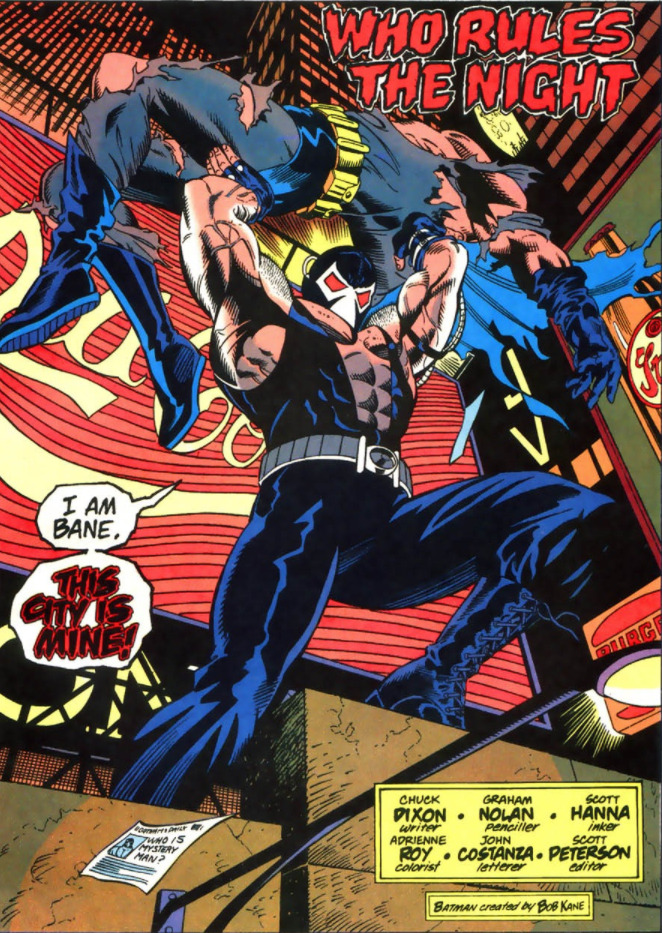
Bane breaks Batman in Detective Comics #664 (1993), DC Comics
“So I’m not embarrassed to talk about it,” Soto asserted. “History is there. Nobody’s trying to blame something.
“Nobody’s trying to say– it’s just like hear us out. This is our story and, you know what? We can heal together. At the end of the day we can all heal together if we recognize the stuff that has happened in the past and lift each other up in a way that I feel the Reyes family lifts each other up. It’s like welcome to our stories and the same way that we’re welcome to other stories. Welcome to our stories and let’s have a dialogue, it’s beautiful,” he concluded.

Batman: Vengeance of Bane #1 Facsimile Edition Cover A by Glenn Fabry (2023), DC
RELATED: Prolific Batman Writer Chuck Dixon Reveals DC Comics Editorial Wanted To Change Bane’s Name
As detailed in Batman: Vengeance of Bane #1, Bane was sentenced to serve out the sentence of his father who seemingly engaged in a violent coup that was put down by the rulers of the Republic of Santa Prisca.
He was born in the prison called Pena Duro and was kept in protective custody until his mother died when he was six. From there he was released into the prison’s general population. After a brutal encounter with two prisoners, he fell and laid in a coma for a month. When he awoke, he brutally murdered one of the prisoners who attempted to make him his pawn. For punishment, the warden sent him to the hole, where he survived on the rats and the fish he killed when the cell was flooded.
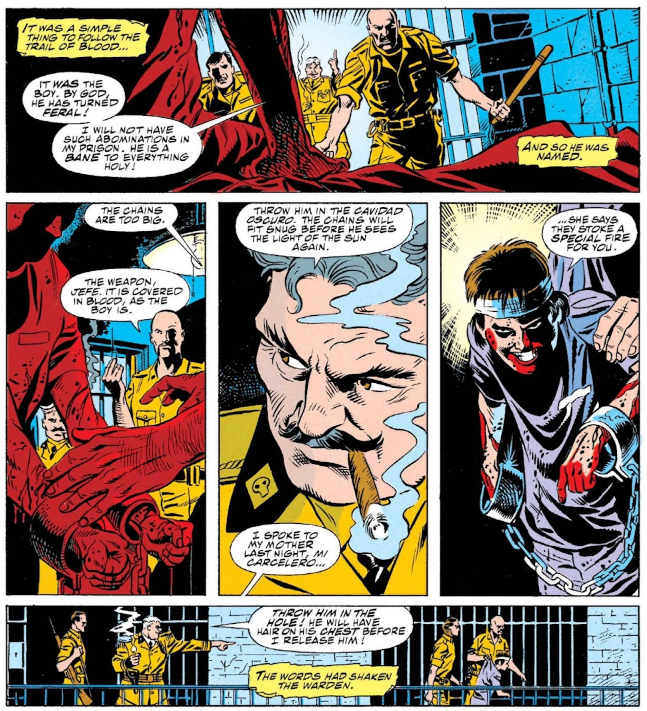
Vengeance of Bane #1 (1993), DC Comics
After spending a decade in the hole, Bane was released back into general population where he spent his time consuming thousands of books, mastering multiple languages, and honing his body into a perfect killing machine.
Not only did he spend a significant portion of his time training, but he also had to defend his position as ruler of the prison from time to time. However, he was still a prisoner and soon came under the thumb of the warden when his body count reached 30. The warden and his men subdued Bane and then subjected him to experimental treatments and surgery involving the drug Venom.
After the experiments, he collaborated with an inmate named Zombie who was able to duplicate Venom. Bane then faked his own death and was seemingly fed to the sharks. However, he returned to the prison, captured the warden, and freed a number of the inmates who he then took with him to Gotham City, where he challenged Batman.
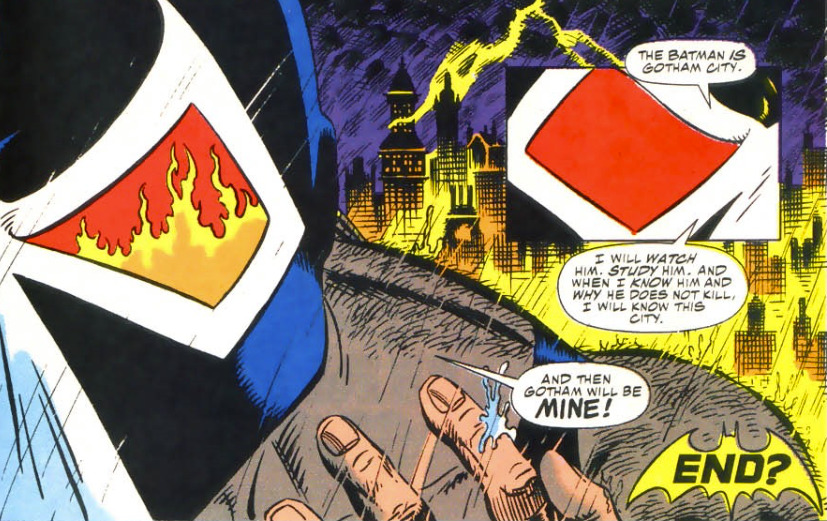
Vengeance of Bane #1 (1993), DC Comics
It’s possible to read American interventionism into Bane’s origin story if you believe the Americans were somehow aiding the government forces of Santa Prisca and brutally put down the attempted coup.
However, nowhere in Vengeance of Bane #1 does it indicate Americans had anything to do with the coup on Santa Prisca.

Vengeance of Bane #1 (1993), DC Comics
What do you make of Soto claiming that Bane’s origin is an allegory for American interventionism in Latin America and the Caribbean?
More About:Comic Books Movies
